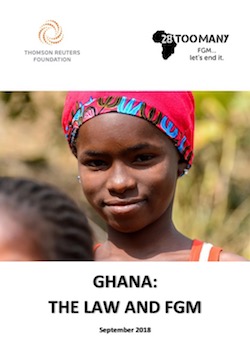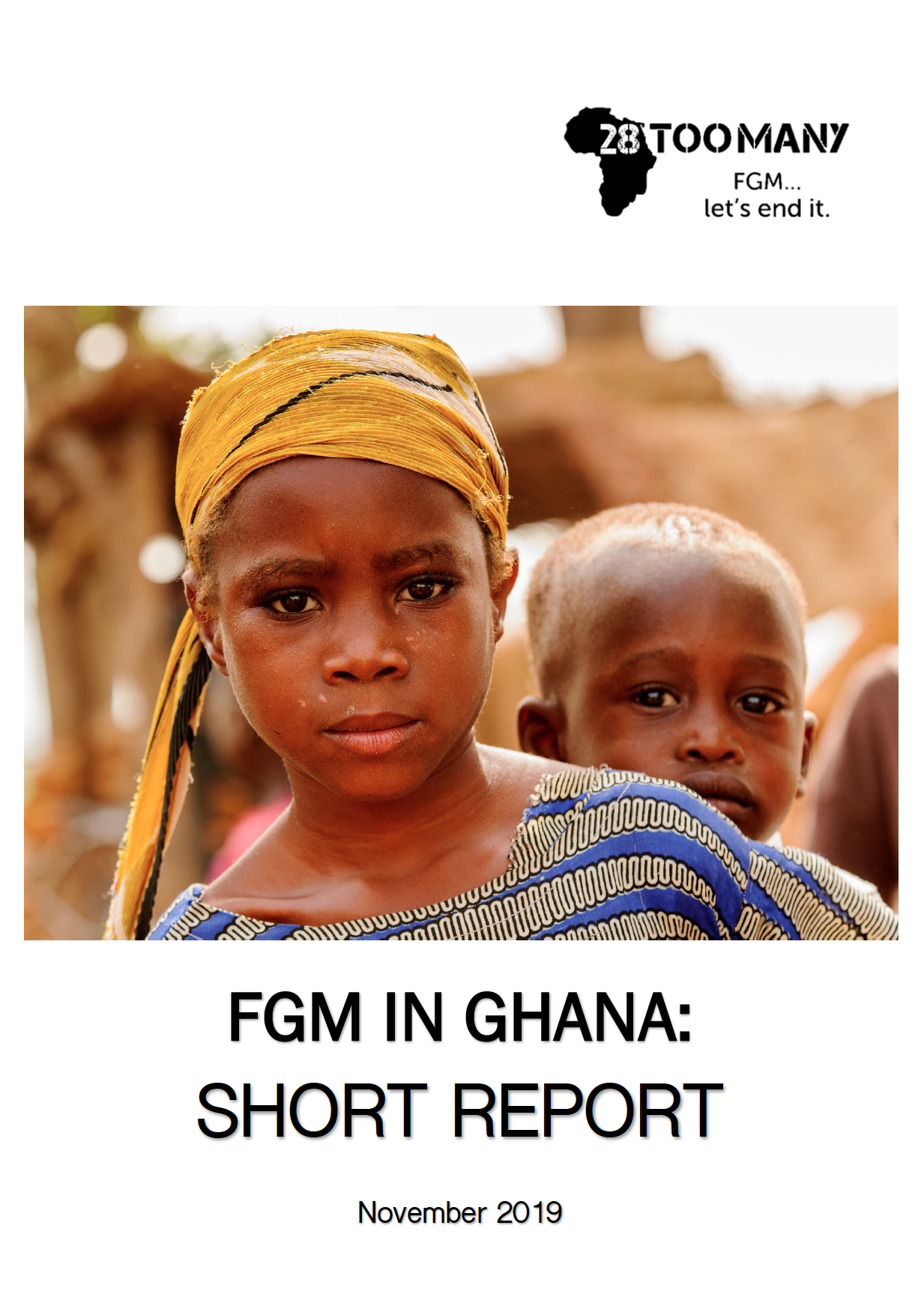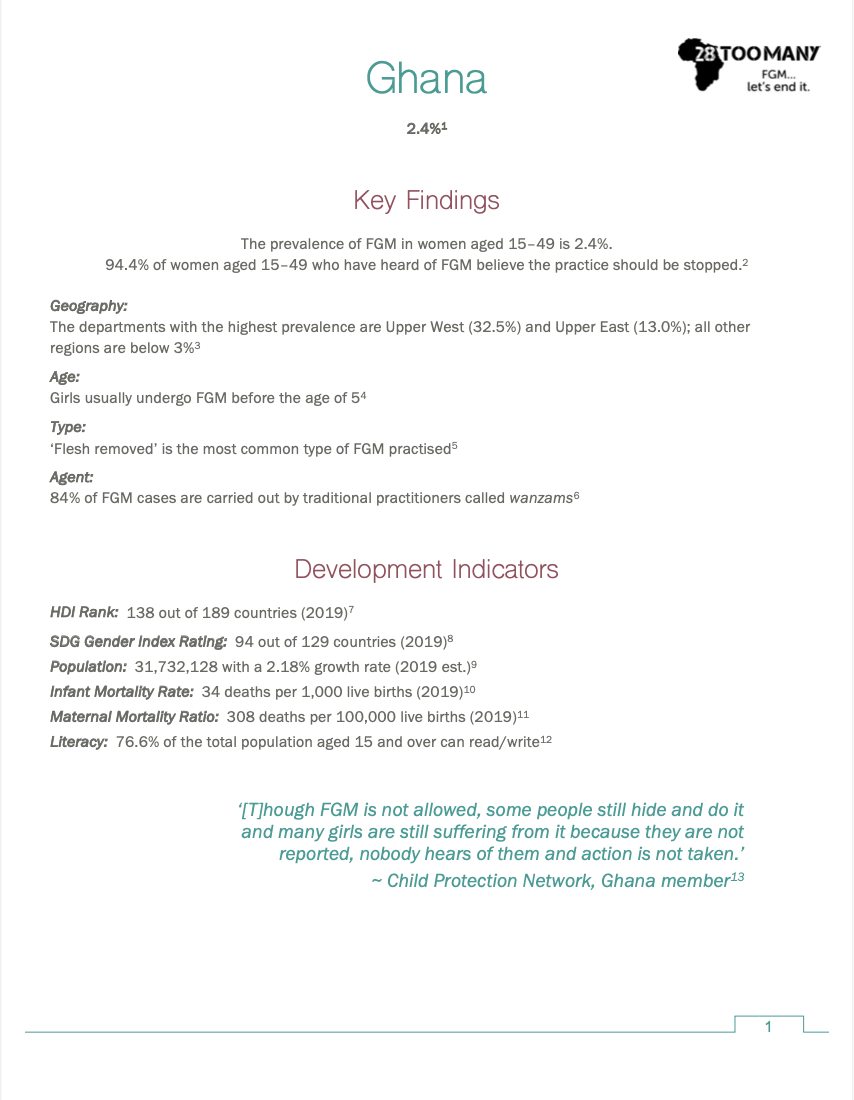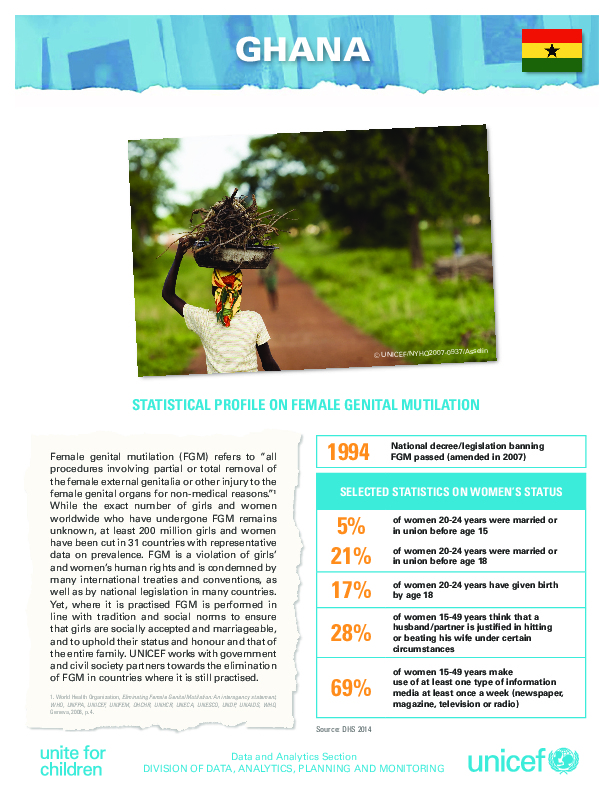Home | Research & Resources | Ghana
Key Findings
The prevalence of FGM/C among women aged 15-49 in Ghana is 2.4%.
94.4% of women aged 15-49 who have heard of FGM/C believe the practice should be stopped.
Geography
The departments with the highest prevalence are Upper West (32.5%) and Upper East (13.0%); all other regions are below 3%
Age
Girls usually undergo FGM/C before the age of 5
Type
‘Flesh removed’ is the most common type of FGM/C practised
Agent
84% of FGM/C cases are carried out by traditional practitioners called wanzams
Distribution of FGM/C across Ghana
FGM/C is practised by several ethnic groups including the Kusasis, Frafras, Kassenas, Nankanis, Busangas, Wallas, Dagarbas, Builsas and Sisalas, who live mainly in the Upper East, Upper West and Northern regions of Ghana, and the migrant population in the south. As a result, the Upper East and Upper West have the highest prevalence of FGM, at 13.0% and 32.5% respectively (of women aged 15-49), and all other regions have a prevalence of less than 3%. The Volta region, along the east coast, has the lowest prevalence, at 0.3%. Women aged 15-49 who live in rural areas are more likely to undergo FGM/C (3.6%) than those living in urban areas (1.2%).
The prevalence of FGM is inversely correlated with level of education and wealth, and 94.4% of women aged 15-49 who have heard of FGM/C believe the practice should be stopped.
Trends in FGM Prevalence in Ghana
Between 2011 and 2017-18, the overall prevalence for women aged 15-49 decreased slightly from 3.8% to 2.4%. However, breaking down the most recent data by age group shows that the prevalence for women aged 45-49 is 4.9%, while for the youngest age group this has fallen to 0.6%. Despite the fact that a small number of women may be cut after the age of 15, the data suggests that there is a trend towards lower prevalences among younger women.
FGM/C Legislation in Ghana
In 1994 the Criminal Code (Amendment) Act inserted Article 69A into the Criminal and Other Offences Act 1960 to prohibit 'female circumcision'. In 2007 this was further amended to 'female genital mutilation' and penalties were increased. There is limited information on prosecutions to date in Ghana.
Development Indicators
Population Growth
31,732,128 with a 2.18% growth rate (2019 est.)
Infant Mortality
34 deaths per 1,000 live births (2019)
Maternal Mortality
308 deaths per 100,000 live births (2019)
SDG Gender Index
Ranked 103 out of 144 countries with a score of 59.9% (2022)


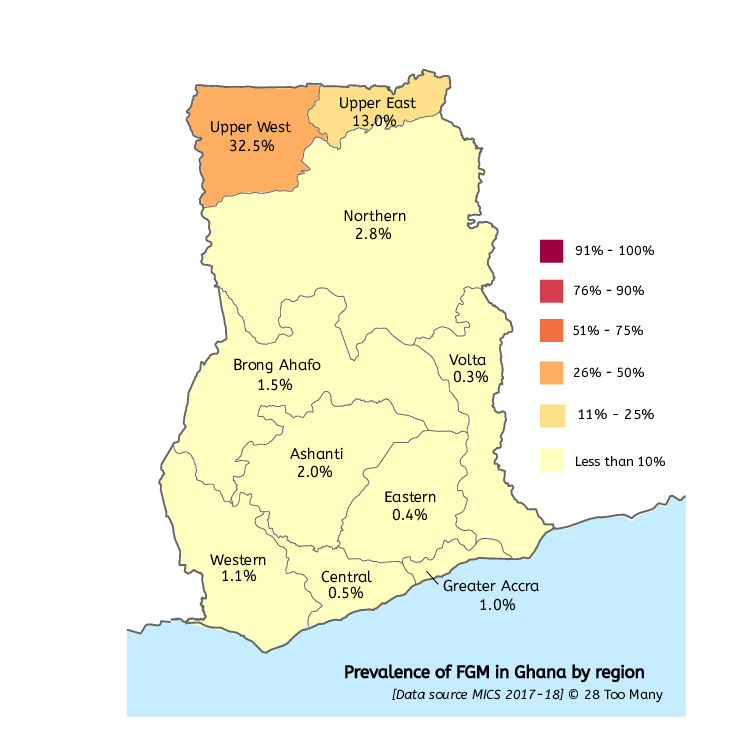
_english.jpg)
